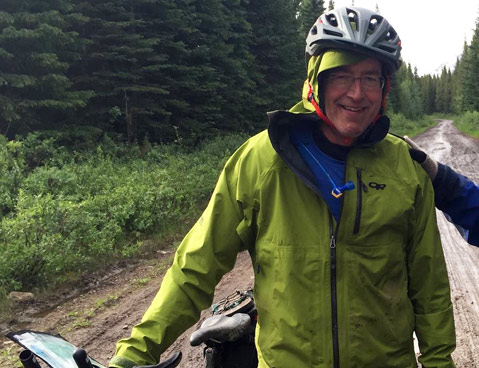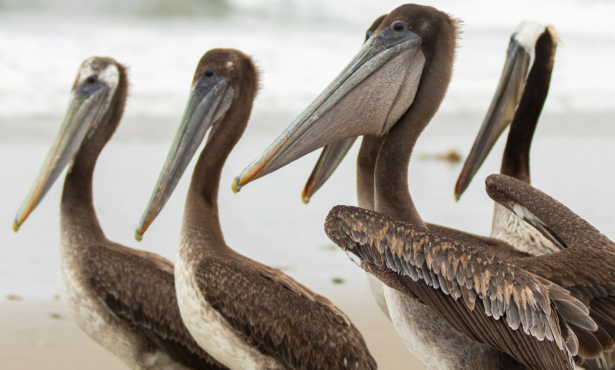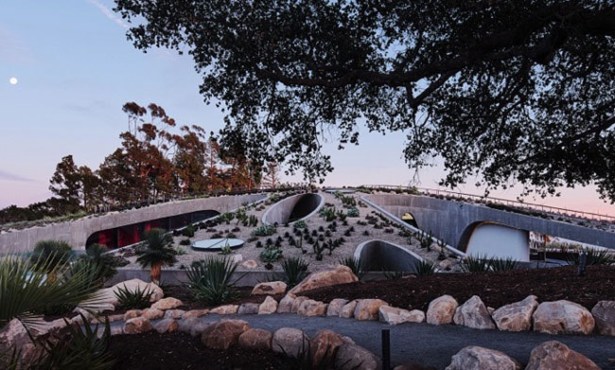Biking the Country, Lighting the World
UCSB Professor Completes Grueling Mountain Bike Ride, Raises Awareness for Education Non-Profit

Last month, Professor John Bowers returned from an adventure that took him to places as vast and remote as the Great Basin Desert, the Gila Wilderness, and the Grand Tetons. Along the way he encountered glaciers, bears, wild horses, mountain ranges, and lots of mud.
His impressive journey was but a step in an even greater quest: to bring light to the 1.4 billion people around the world living without electricity. Bowers, a professor in the department of Electrical and Computer Engineering and Director of the Institute for Energy Efficiency at UCSB, is also founder of the organization Unite to Light, which distributes low-cost solar-powered desk lights to people living without electricity in disadvantaged countries.
Bowers recently rode the challenging Ride the Divide bike trail along the Continental Divide for the personal challenge. He traveled 2,753 miles from Banff, Canada to Antelope Wells, New Mexico in less than 30 days. His personal accomplishment has inspired his organization to go the distance with a charity campaign. Unite to Light has pledged to match each mile biked with a donation-funded campaign to send 2,753 solar-powered lights to children in Africa. An all-day charge can power the lights for an entire evening, allowing children to do schoolwork past dark.
Since Bowers co-founded the organization in 2010, Unite to Light has distributed 65,000 lights to 65 countries on four continents, reaching places as far as Japan, Haiti, Ghana, Rwanda, and Zimbabwe. Bowers was inspired to found the organization while meeting with Dr. Osei Darkwa, a visiting professor from Ghana. As they discussed the work being done by the Institute for Energy Efficiency and the work of energy innovators Shuji Nakamura and Alan Heeger, Dr. Darkwa asked Bowers, “Why don’t you do something good for the world?”
“I thought that was pretty cool,” Bowers says of the conversation.
Ride the Divide bike trail
The Ride the Divide trail involves roughly 200,000 feet of climbing, the equivalent of climbing the Mount Everest summit from sea level seven times. Setting out on June 13th, it took Bowers 27 days and 20 hours to compete the trek. There is no prize for completing the race, and riders can only practically carry around 75 pounds of material, including food and water. Riders usually need to clock in about 100 miles a day to complete the long ride in a reasonable amount of time, sometimes having to ride long after dark to make the miles.
“To do [100 miles] every day for 28 days, that was the challenge,” Bowers said. “It was harder than I thought, to be honest.”
The long distances become much more grueling when you have to face the rough terrain and mountain passes of the Continental Divide, which the trail crosses roughly 35 times. While the race didn’t require radically intensive training, Bowers would bike through Old San Marcos Pass or along Casitas Pass to prepare for some of the conditions he would face. “We have good mountains to train on here,” Bowers said. “We don’t have altitude is the only problem. So it took a few days to get acclimated.”
Weather would also turn out to be an obstacle. Riders had to face varying levels of rain, sleet, and snow. But in areas like the Great Basin Desert, which took Bowers two days to cross in early June, temperatures reached 105 degrees as early as 9am, lasting throughout the day.
Typically, Bowers explained, about half the people that start the race actually finish. Out of 150 participants, only 80 people ended up finishing the race; last year, only a third finished, mostly because of the cold conditions. Many end up succumbing to the difficulties of the trail. This race in particular saw two riders catching pulmonary edema, coughing up blood from all the dust. One rider from Santa Barbara had to be airlifted out in Canada after he fell head first on some rocks.
To prepare for situations like these, riders are all equipped with GPS spot tracking devices that feature a SOS button. Riders are also given detailed directions to follow, which come in handy along the way because of the very limited cell phone coverage.
“We didn’t really have connection to the rest of the world,” Bowers said. “So we didn’t really know what was going on in Greece and all these other things, or even our friends lives.”
While they didn’t know what was going on in the lives of friends back home, they still got to learn about the many adventures of fellow riders along the way. “Relief, obviously,” Bowers recalls feeling as he reached the end of the race. “There’s a point where you have so much invested in it that you can’t quit.”



